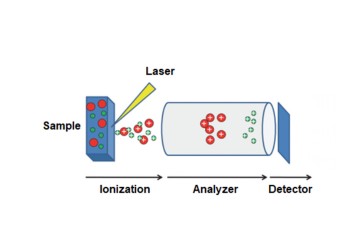In a new paper, Drs Bhupesh Bagga, and Savitri Sharma from LVPEI and a team of experts from PGIMER, Chandigarh and AIIMS, Mohali compare the results of MALDI-TOF mass spectrometry with PCR based DNA sequencing to rapidly identify fungal species complex and correlate them with clinical results. They find that MALDI-TOF MS can be a good alternative to conventional identification.
Corneal opacity due to infections—a silent epidemic--is a key cause of vision impairment, especially in low- and middle-income tropical countries. Agricultural work, like harvesting, leads to minor ocular injuries in such countries. Without early intervention, such injuries can develop into an infection. In India, about 50% of all culture-positive corneal infections are caused by fungi. Almost all fungal keratitis is caused by filamentous (thin, threadlike) fungi like the Fusarium ‘species complex’. Fungal taxonomy is complicated. Species that can be traced to a common ancestral gene form a ‘clade’. The Fusarium genus today has 200-300 species (Some 100 are known pathogens). These are sorted into 20-odd ‘species complexes’, where the species in a clade are characterized into a species complex because the boundaries separating these intraclade species is fluid.
All this complexity makes diagnosing a fusarium infection expensive, time-consuming, and difficult. However, identifying the species complex is critical as different species complexes vary in virulence and respond to different antifungals. In the past decade, a type of mass spectrometry called ‘matrix-assisted laser desorption/ionization–time of flight (MALDI-TOF)’ has been revolutionising identification of fungal specimen. MALDI-TOF is cheaper and less laborious than PCR based Sanger sequencing. It is faster and more reliable at identifying specific species than conventional lab cultures, bringing down diagnosis time to 2 hours, compared to days or even a week for the other tools. However, because of the range and complexity of fungal species, MALDI-TOF’s database needs to be expanded to cover regional isolates and variations.
A new paper in the journal Cornea reports on the results of a multi-institute study led Dr Bhupesh Bagga from LVPEI comparing the diagnostic efficiency of MALDI-TOF to TEF 1-alpha gene PCR based DNA sequencing in precisely identifying fusarium species. The researchers expanded MALDI-TOF’s database with an in-house reference database of filamentous fungi. Based on this identification, the study analysed the clinical outcomes of three fusarium species complexes: the Fusarium solani species complex (FSSC), the Fusarium dimerum species complex (FDSC), and the Fusarium fujikuroi species complex (FFSC). The study included 29 patients (58% male) who presented at LVPEI over a three-month period. In them, 27 eyes (93.1%) had hyphal extensions characteristic of fungal keratitis.
MALDI-TOF was able to correctly speciate 28 of the 29 isolates in this study. The study found 69% of the infections were from the FSSC group by a species called Fusarium falciforme—these took longer to heal and had a poorer prognosis. The paper notes that 14 out of the 29 patients did not report ocular trauma—but antibiotic use was a predisposing factor. This notes the shifting factors underlying disease presentation in India today. The study adds to the growing evidence that MALDI-TOF is powerful diagnostic tool for fungal keratitis that is both cost-effective and rapid.
‘Fungal infections of the eye are a growing cause of corneal blindness, especially in India. Treating fungal infections is difficult, and the sooner we can begin treatment the better,’ notes Dr Bhupesh Bagga, the corresponding author and Head of The Ramoji Foundation Centre for Ocular Infections at LVPEI. ‘Our study found that MALDI-TOF mass spectrometry offers a significant improvement in time needed for diagnosis, especially after we added to its dataset with our own reference database. I hope to see further gains in treatment outcomes in the future because of the time saved.’
Citation
Bagga, Bhupesh MD; Das, Sourav PhD; Tawde, Yamini PhD; Singh, Shreya MD; Shaw, Tushar PhD; Sharma, Savitri MD; Ghosh, Anup PhD. Fusarium Keratitis From a Comprehensive Eye Health Care Facility in South India: Molecular Characterization by MALDI-TOF Versus Polymerase Chain Reaction Sequencing, Species Complex Distribution, and Clinical Correlation. Cornea 42(9):p 1150-1162, September 2023. | DOI: 10.1097/ICO.0000000000003315
Image credit: MALDI-TOF; by C. Szot, A. Croxatto, G. Prod’hom & G. Greub; CC BY 4.0.



